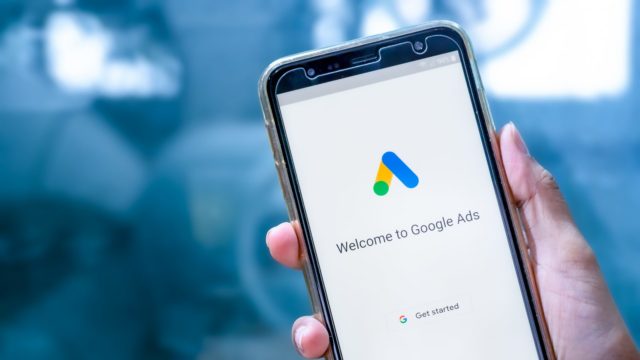After an announcement during The Google Ads Innovation Keynote in May and several months of suspense, Google released Discovery Ads in beta, in November.
However, the question we’ve heard from clients most often since this announcement has been: “What are discovery ads?” Unless you have Google app installed on your phone, you may have never heard of Google Discover before.
Let’s dive into it a little deeper and take a closer look at it below.
What is Google Discover?
Google Discover is still used by over 800 million people – and this number keeps growing.
30 years ago people were reading the newspapers while sipping their morning coffee – today they scroll through their social media and news websites.
Google Discover (which is a new name for Google Feed) helps users take this one step further. It allows all Android and iPhone users who have Google app installed on their phone to personalise their newsfeed by following or unfollowing certain topics.
Here what Google Discover looks like on the mobile app:
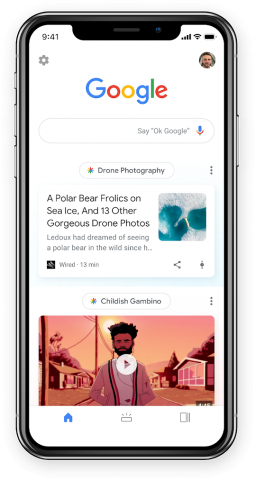
Unlike the Google search, which is designed to provide an answer to a specific search query, Google Discover is aiming to give an answer before the question is asked, which, by the looks of it, is where AI is going in the next several years.
As people interact with Google Discover and give it more information on what they want and do not want to see, it learns more about them and tailors newsfeed to their preferences. It does sound a bit scary, however, in the age of AI and machine learning, it is important to remember that machines are not our enemies. Rather than taking our lives from us, they are changing it. They take over the everyday routines to improve them and better them by making tasks like reading the latest news easier for us!
What are Google discovery ads?
Imagine being able to target ads based on Google Discover features, wouldn’t that be cool? That’s what Google rolled out in beta form as an early Christmas present for PPC practitioners around the world in November.
Google Discovery ads are all about showing your customer something they want before they know they want it – generating demand rather than responding to preexisting demand, which is typically what search ads are utilised for.
Discovery ads, despite the name, do not just appear on Google Discover app. They also appear on YouTube, which is the second biggest search engine in the world and Gmail, which is used by over 1.5 billion users every month.
What do Google discovery ads look like?
Similar to display ads, Google Discovery ads are designed to be very visual and engaging. This is what they look like in the wild:
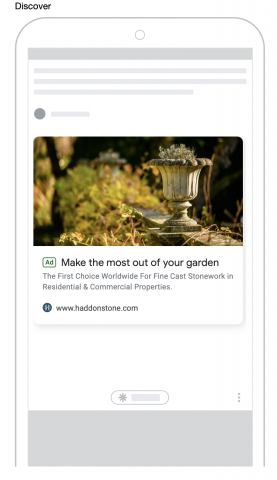
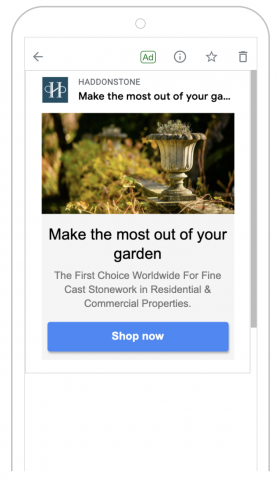
Available ad formats, similar to Google Gallery Ads include carousel ads. These allow advertisers to use multiple images and encourage people to interact and engage with an ad.
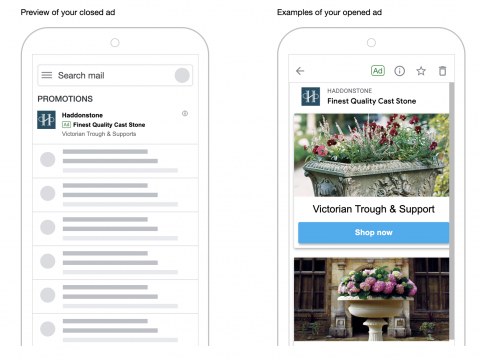
Targeting options for Google Discovery Ads?
Similar to targeting on the Google display network, you can target custom, affinity and in-market audiences on Google Discover. Targeting options also include remarketing audiences, which presents a great way of re-engaging with your existing website audience through another medium.
Most of the Google display network targeting rules apply here and the general idea is to target people based on their interests or what they actively researching for. For example, it would make sense to target people interested in Croatia as a holiday destination if you’re a tour operator advertising the special offer for holidays in Croatia. Or to target people interested in garden furniture and landscaping if you’re selling garden ornaments, and so on.
So, why should I try it?
Google Discovery Ads present a new step in advertising and a different way of expanding your inventory by getting your ads in front of people before they know they want your products/service. It is, however, not the same as standard Google Display and even Facebook or Instagram inventory, where people often do feel annoyed about ads. In Google Discover, people do want to see new things, but they do want ads to be tailored to their preferences. Plus it has the great potential to be much more engaging.
There is much talk about advertisers stepping away from keywords and moving more towards targeting audiences for a while now. This could be the first step towards taking a break from the long list of keywords and engaging with a specific audience through a fast-growing medium.
Want to try Google Discovery ads? Our PPC team have got you covered! Get in touch now using the form below.
Have you discovered something new about Discovery Ads?
Then join the 80,000 people who read our expert articles every month.


